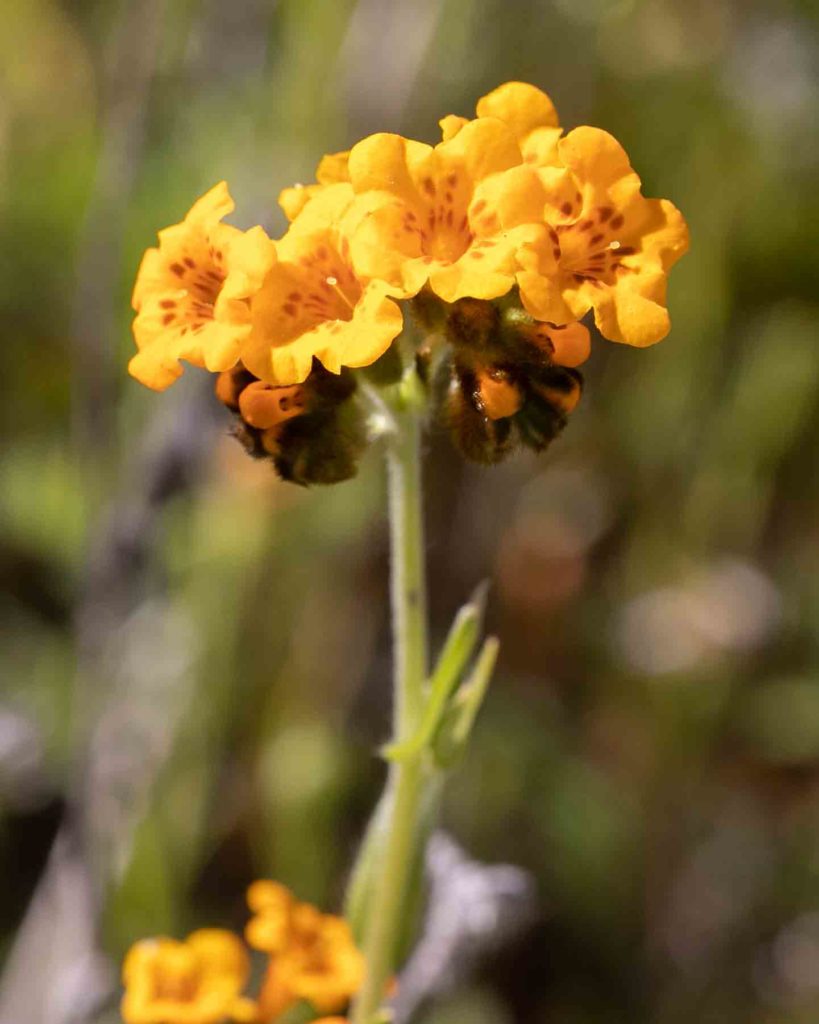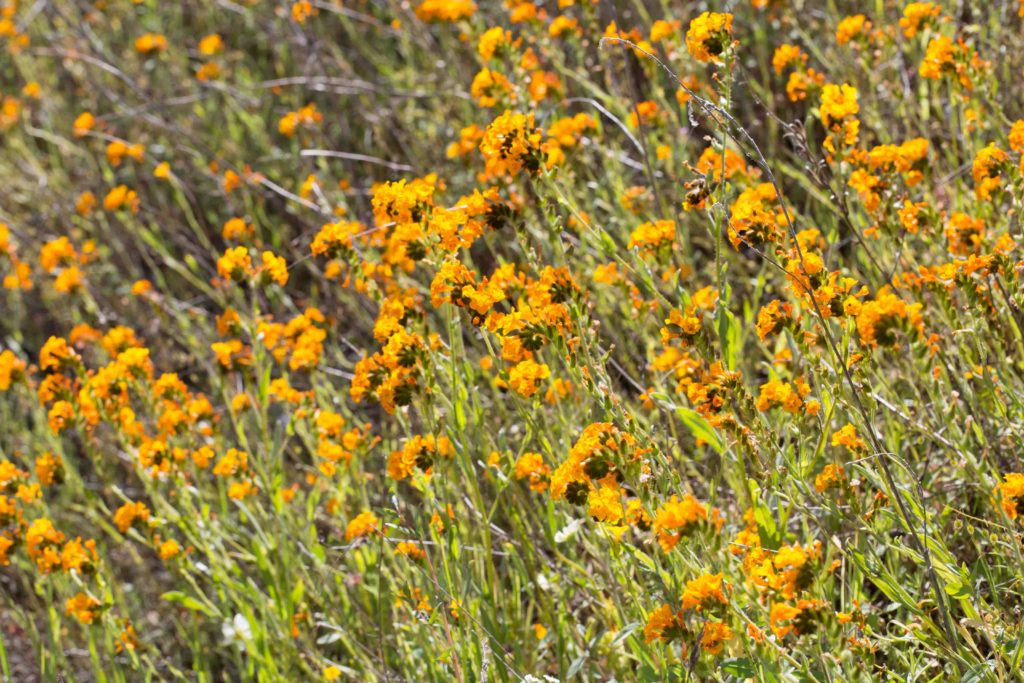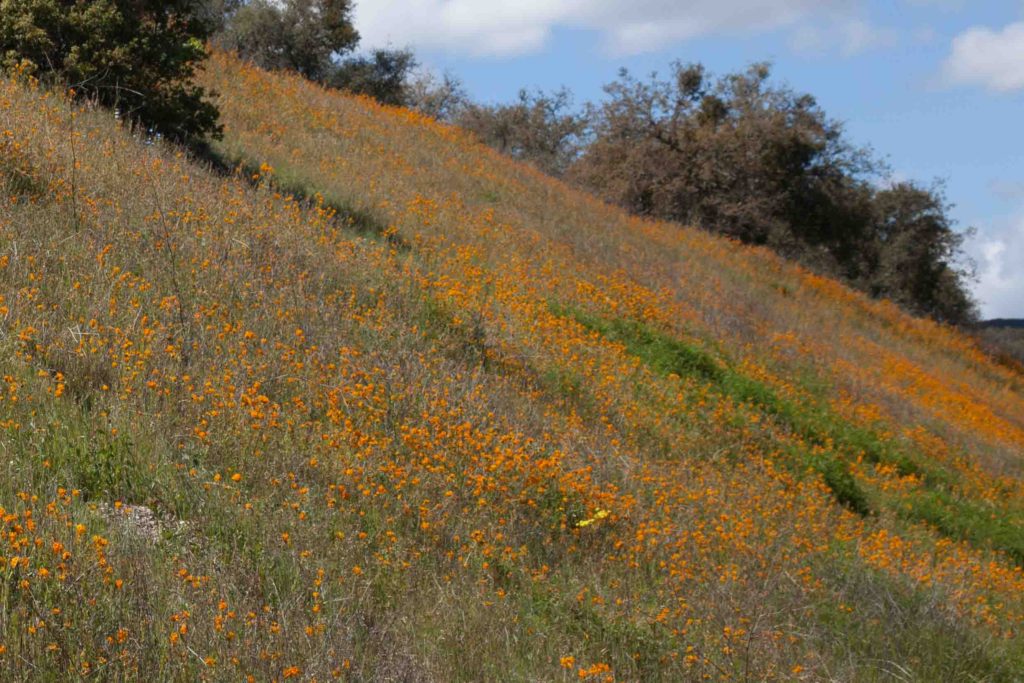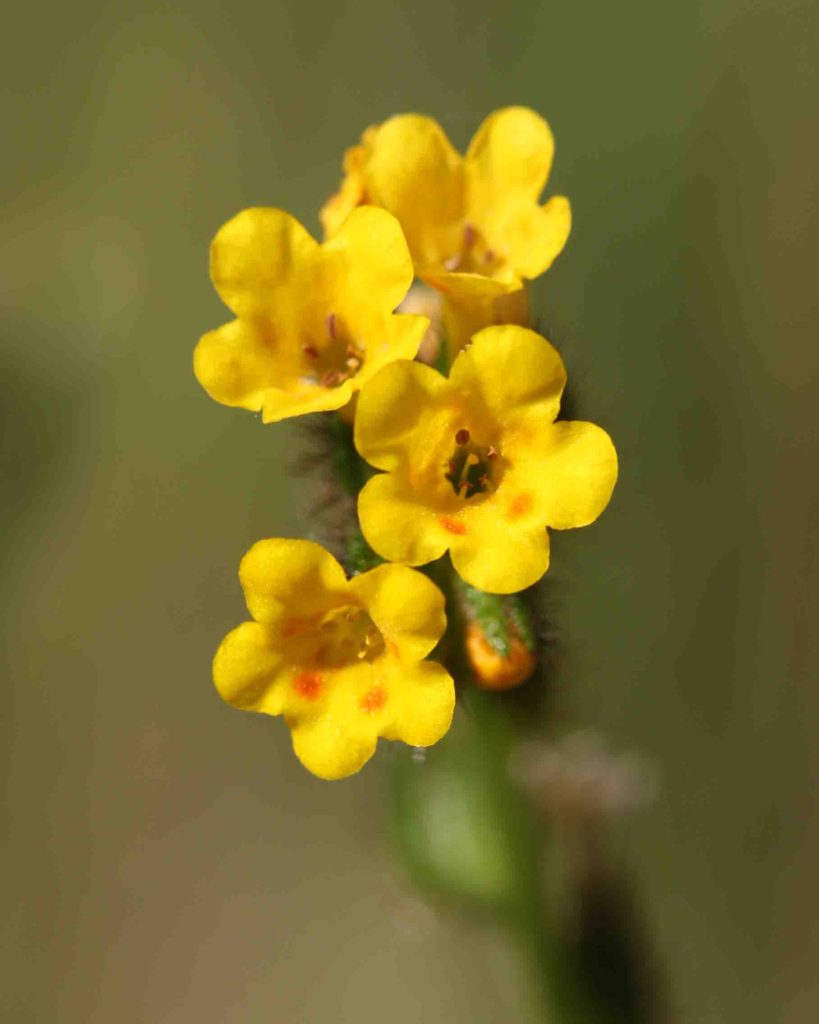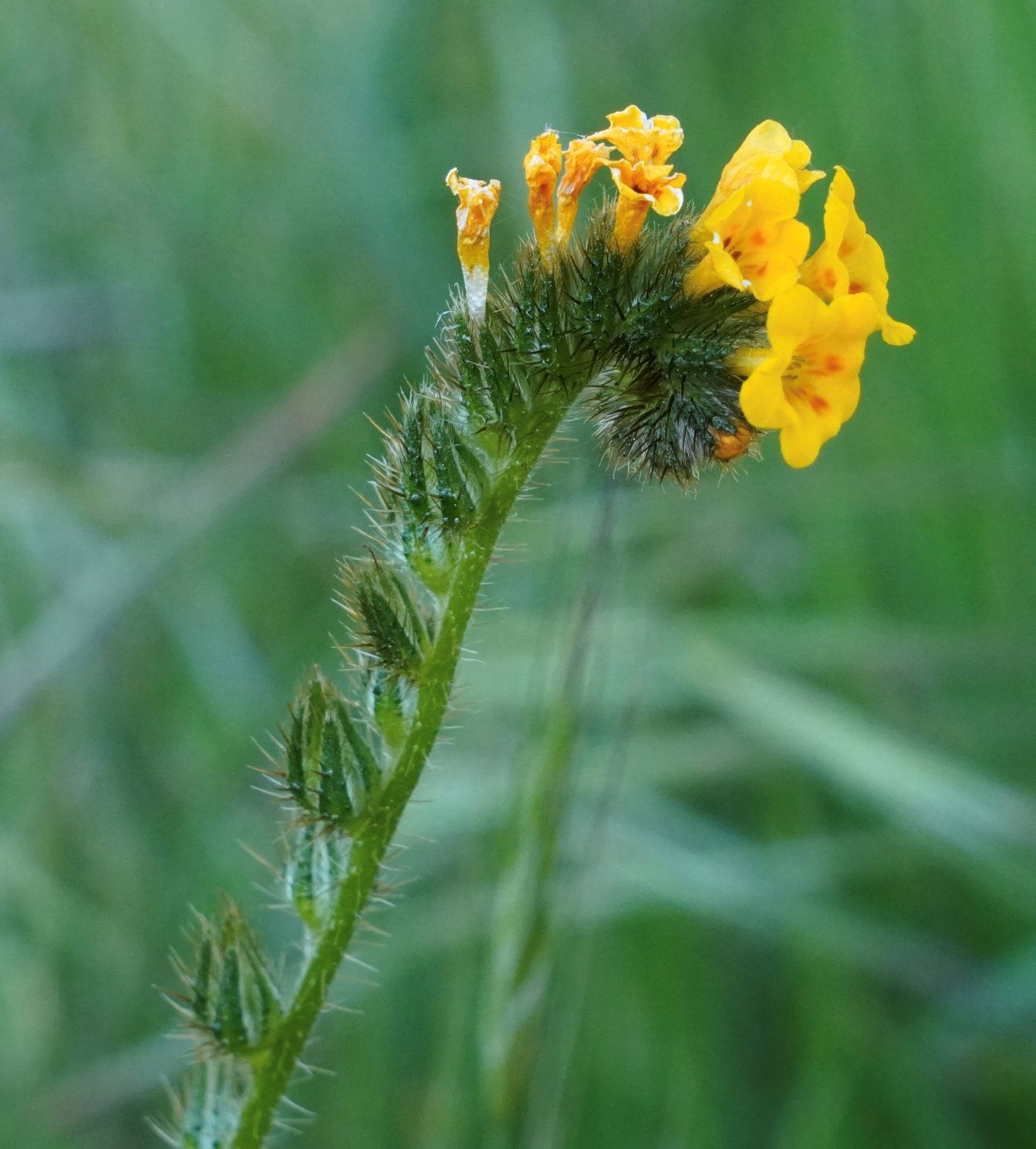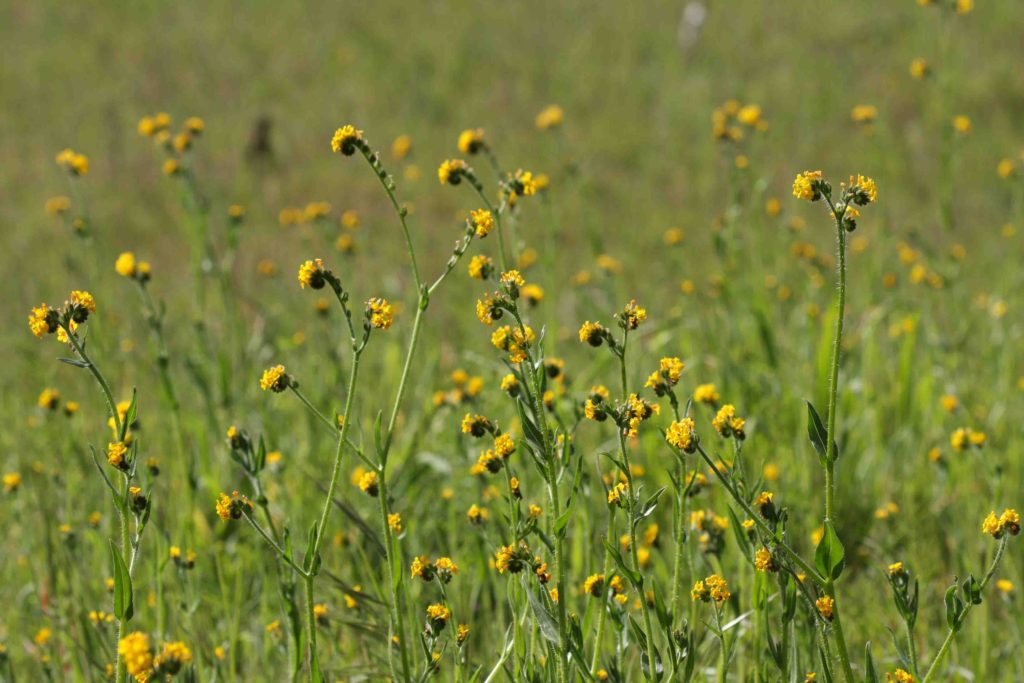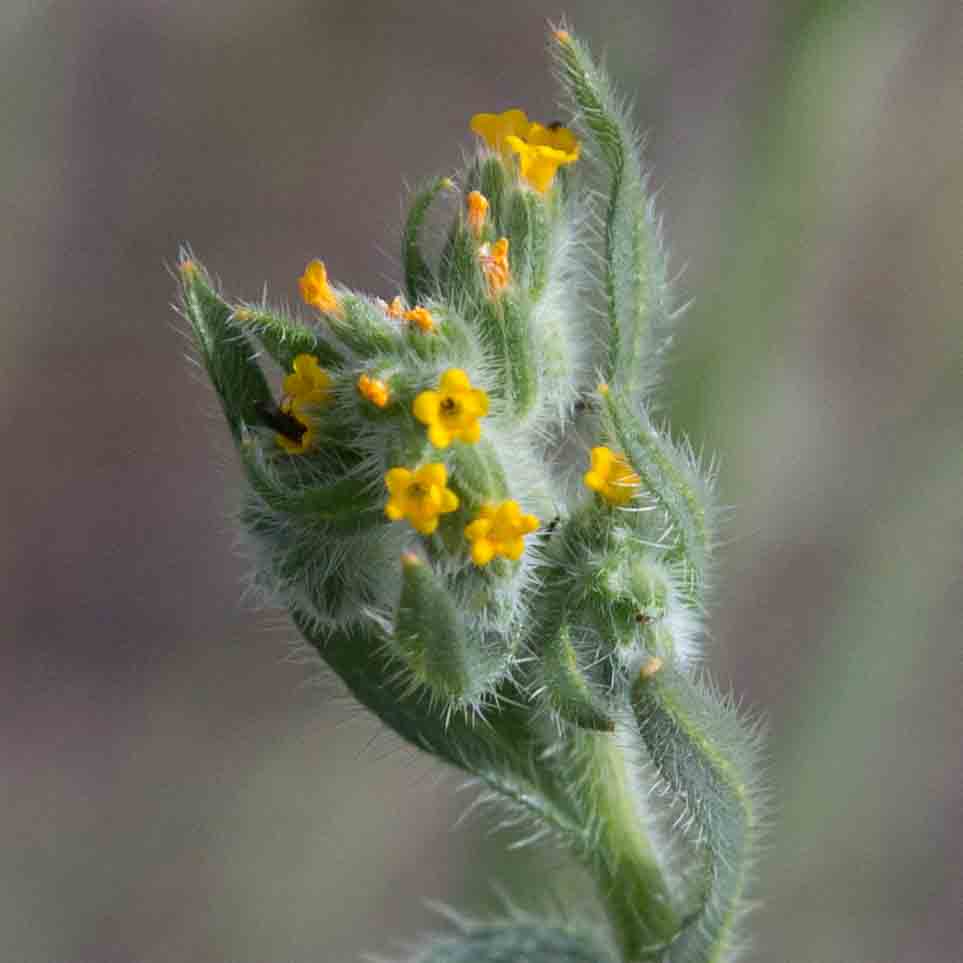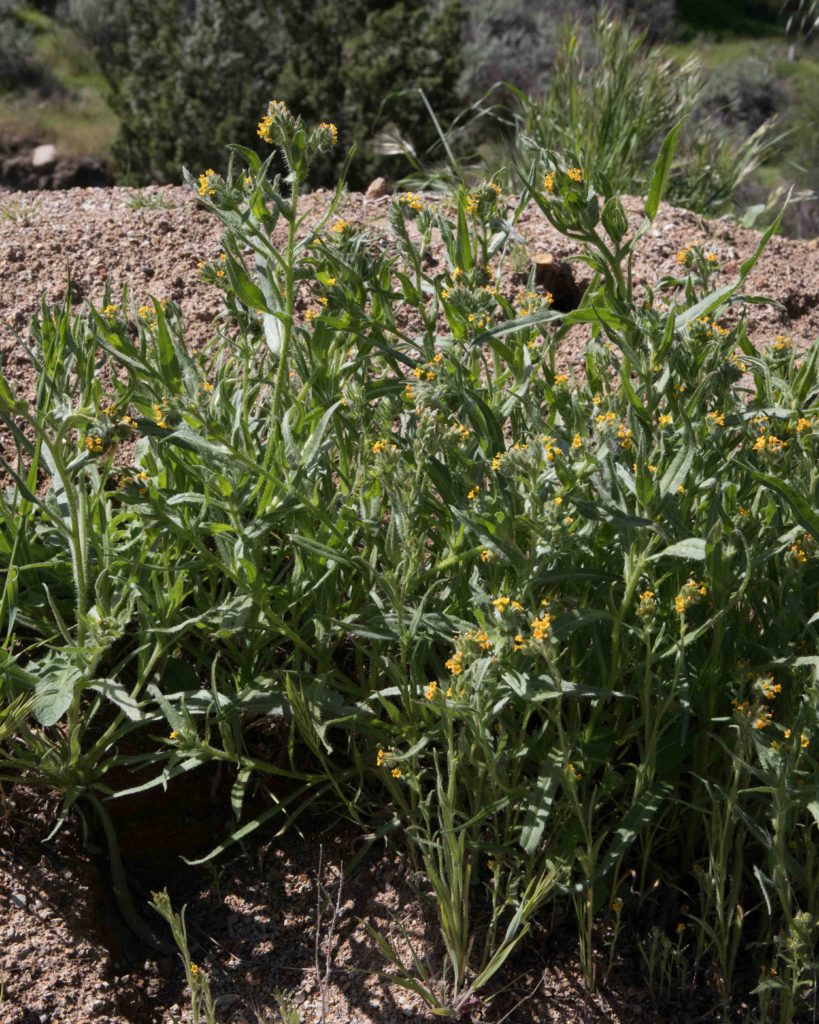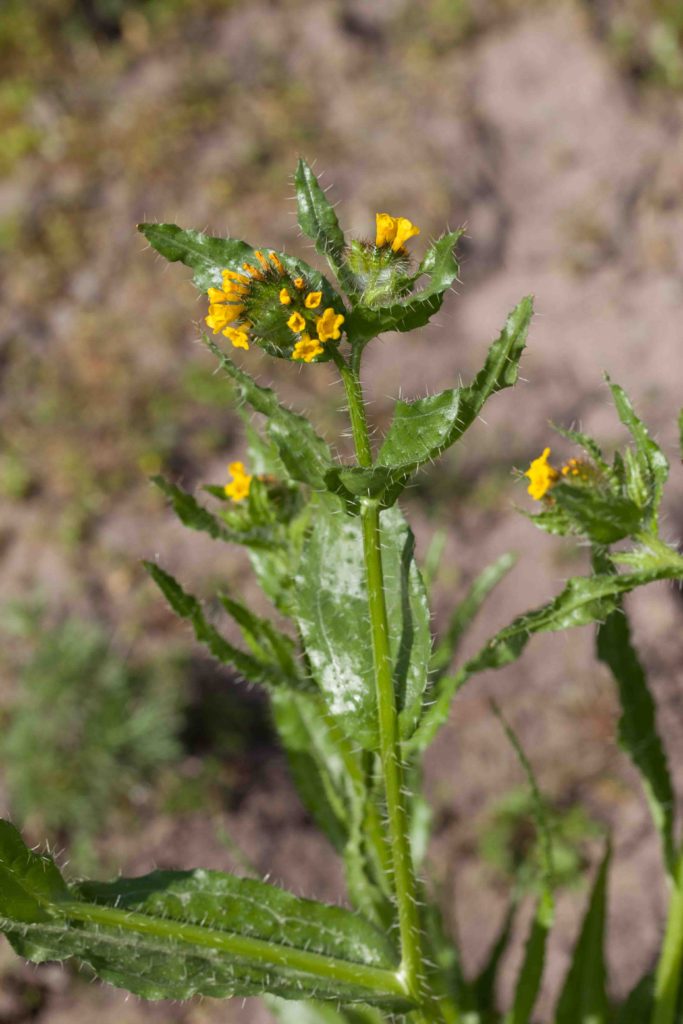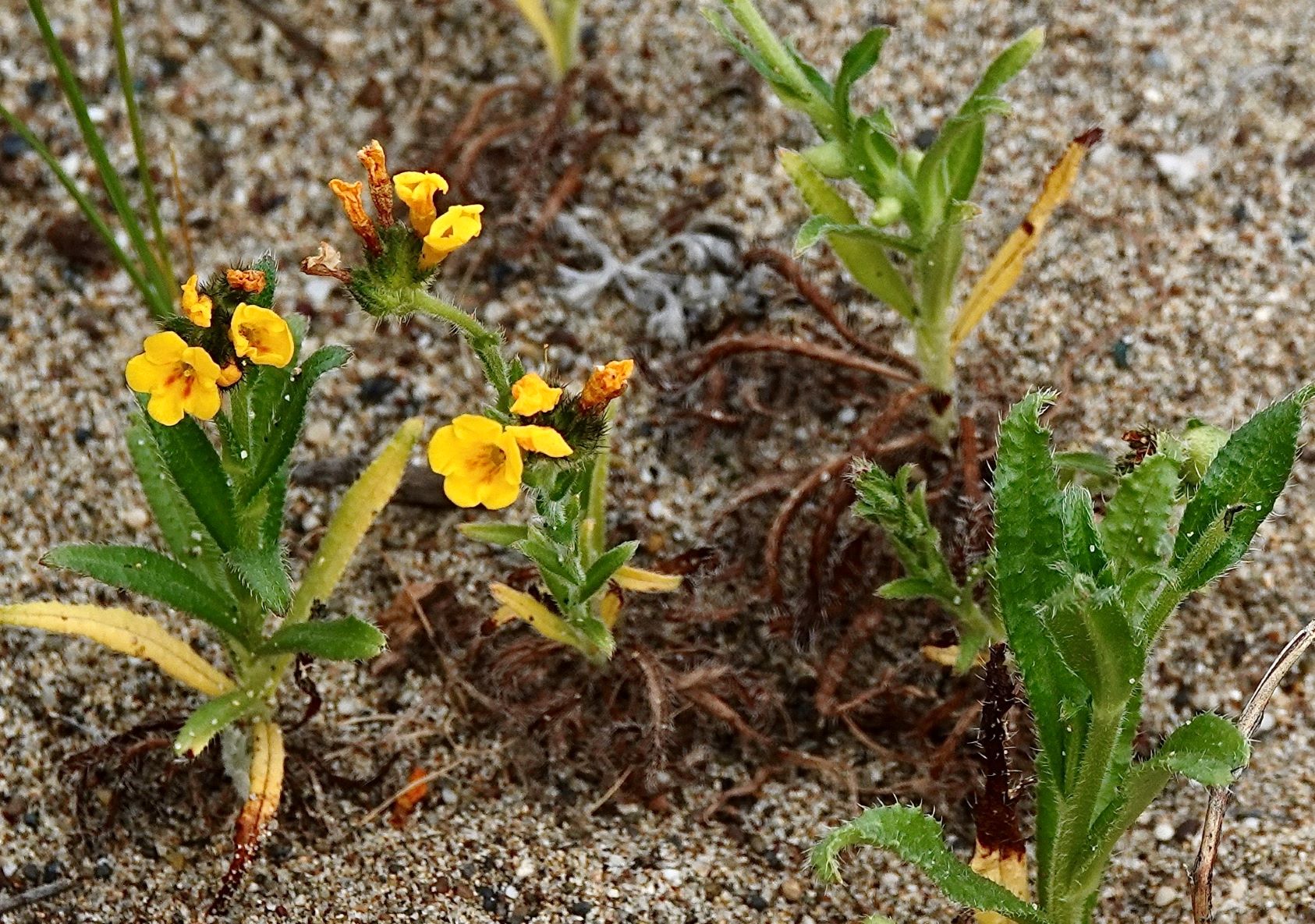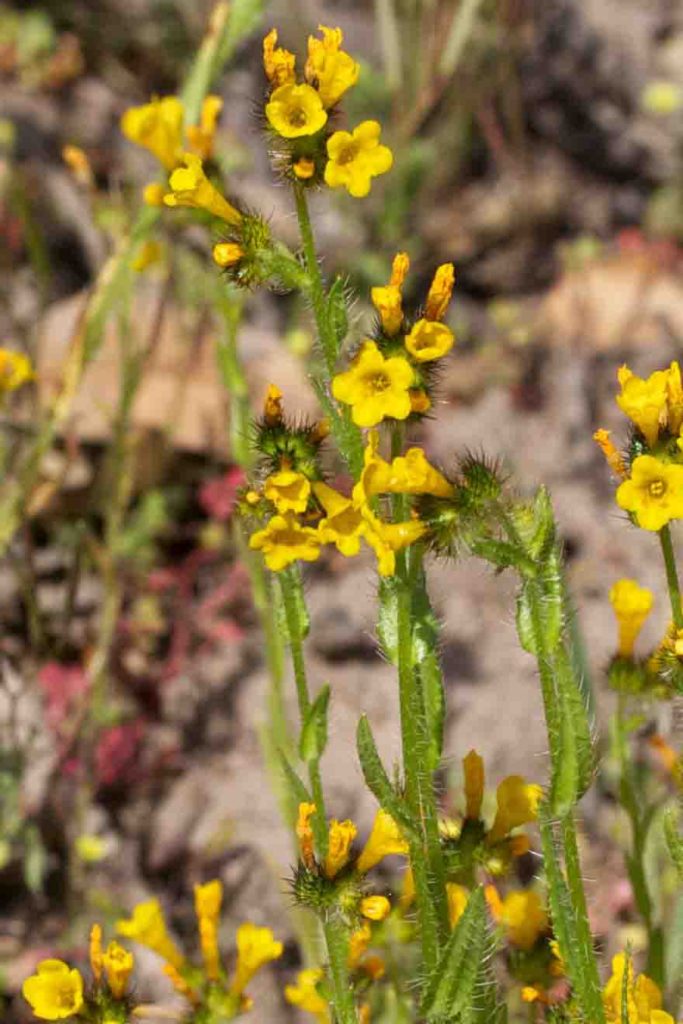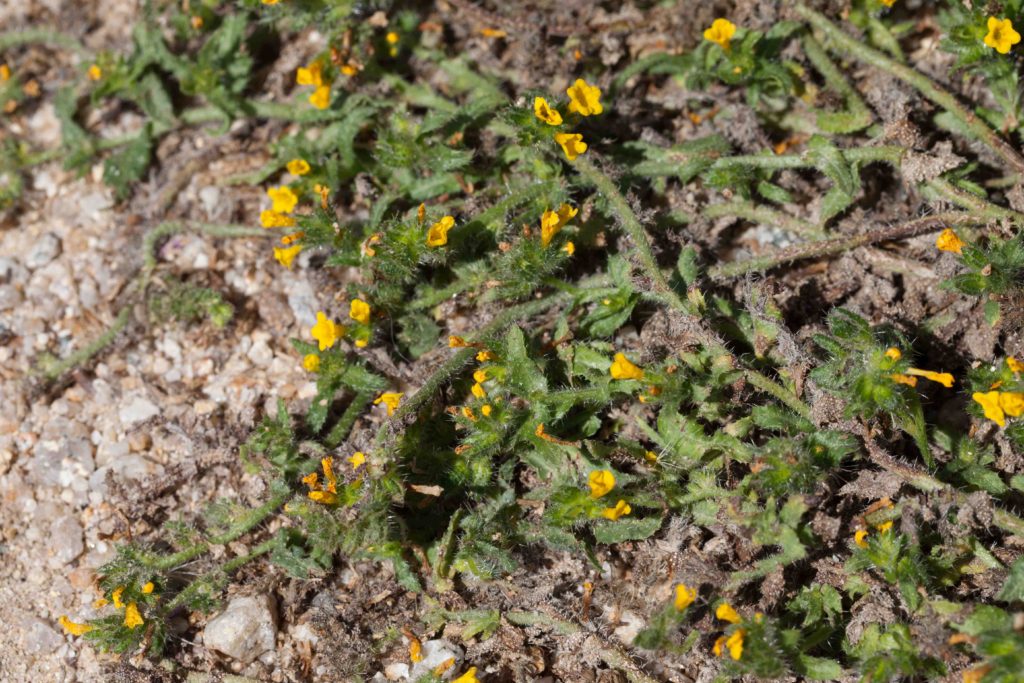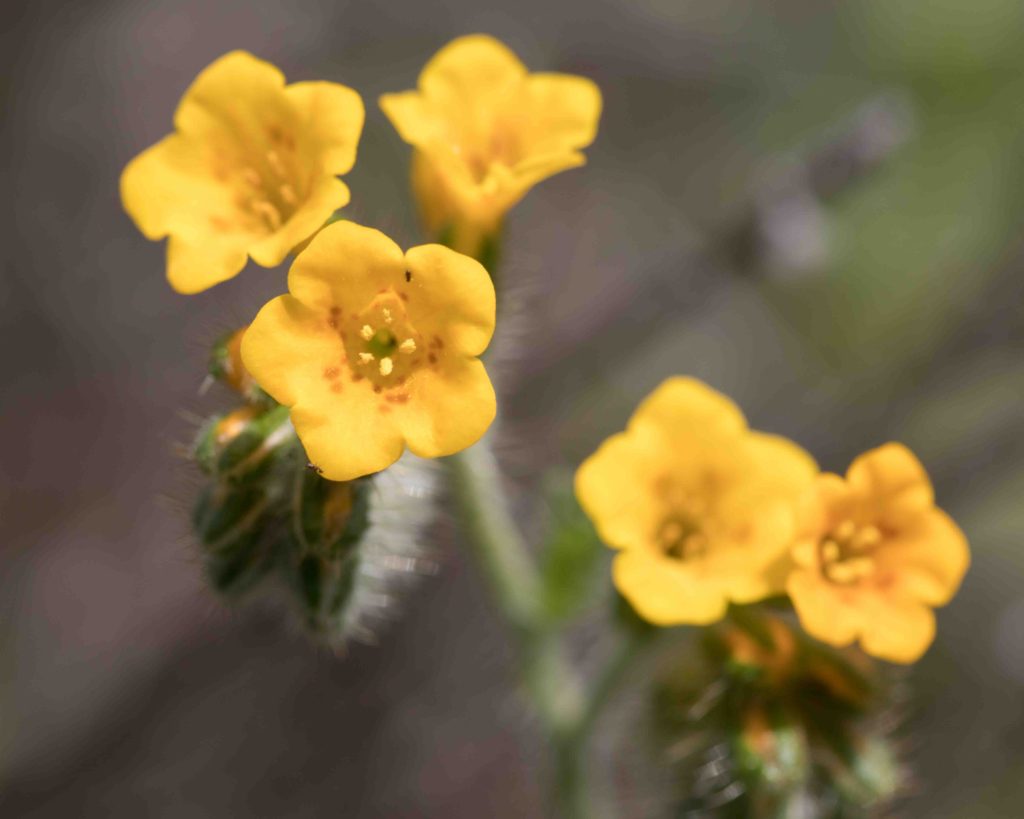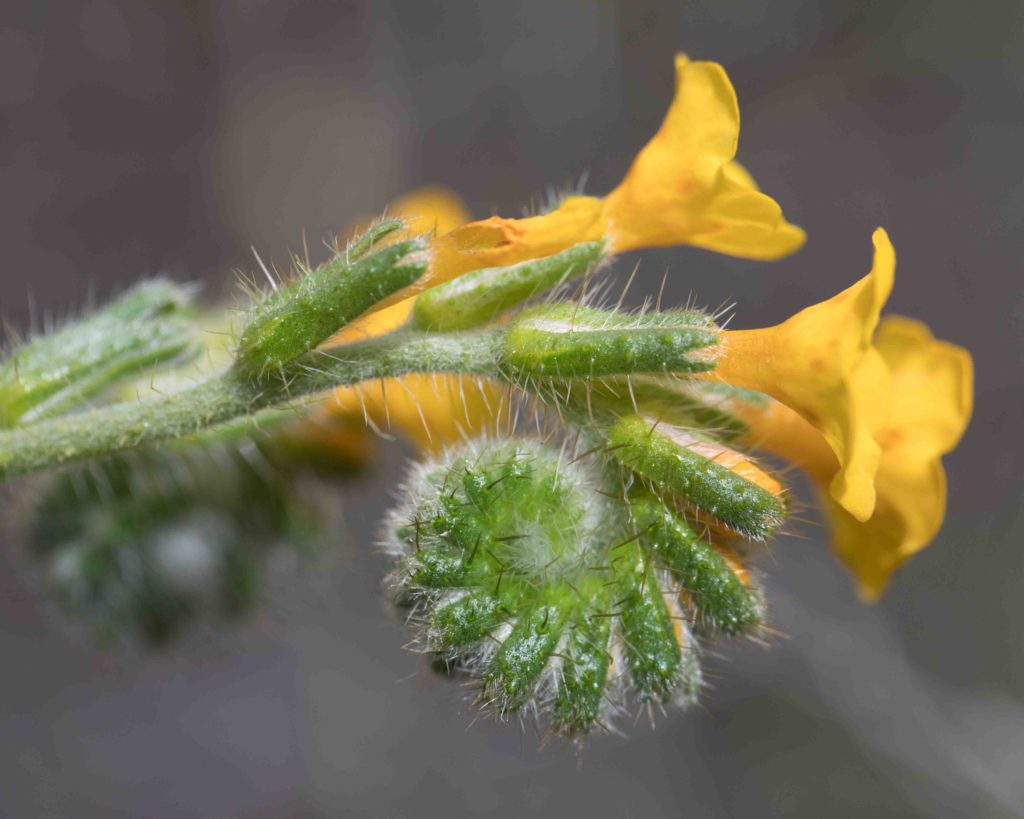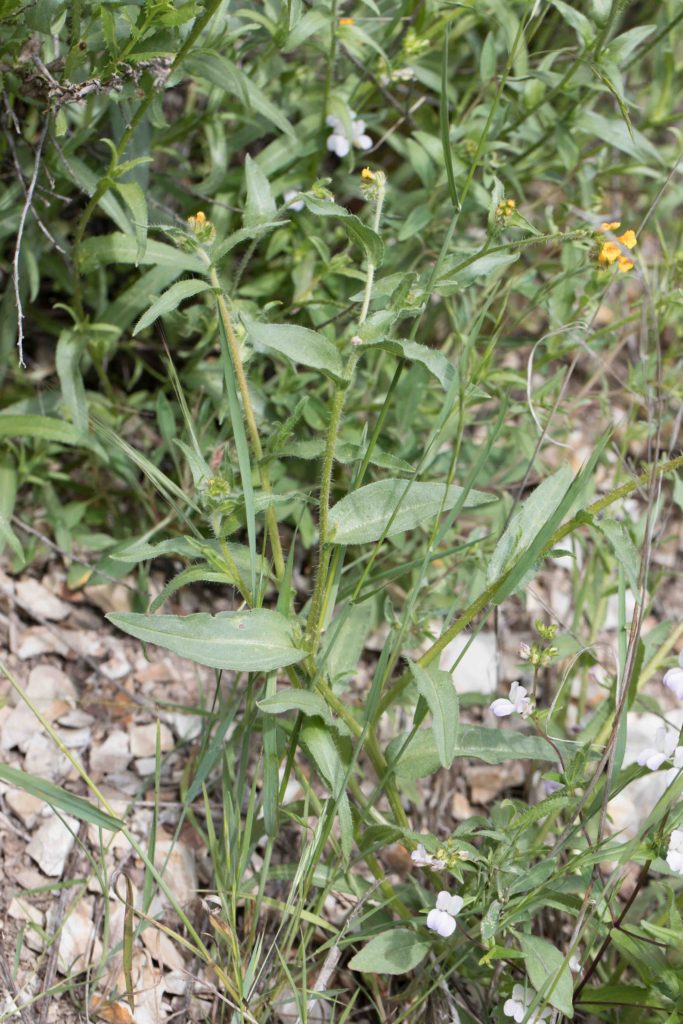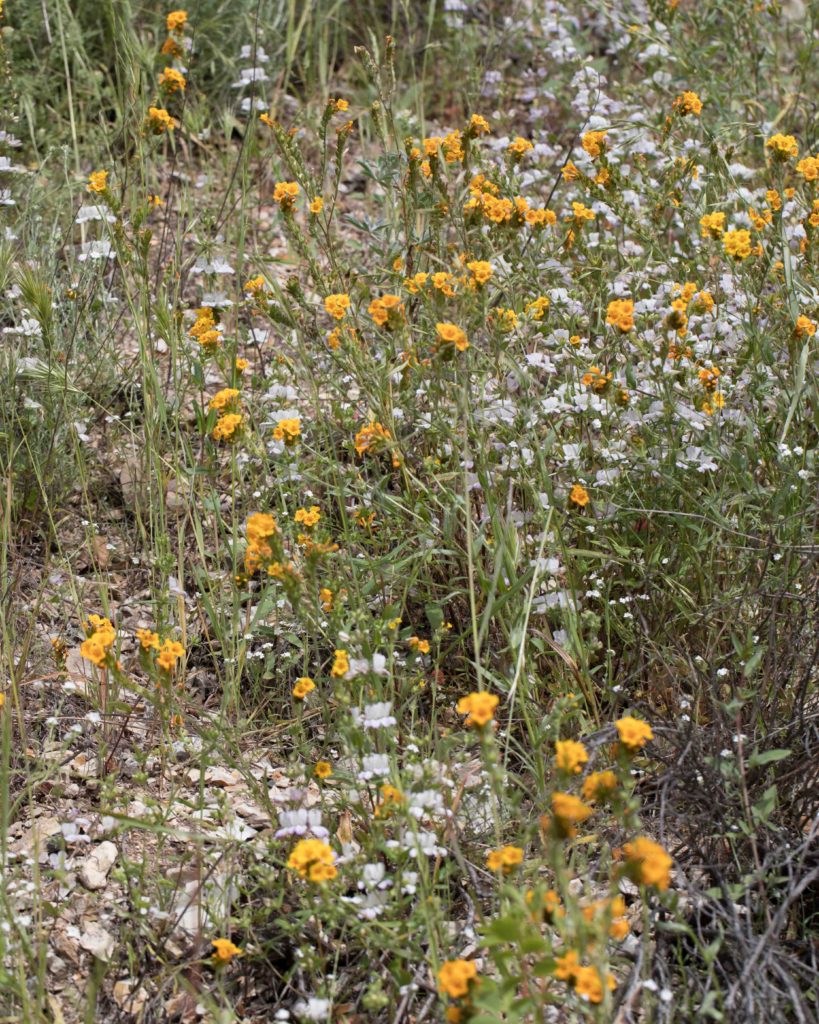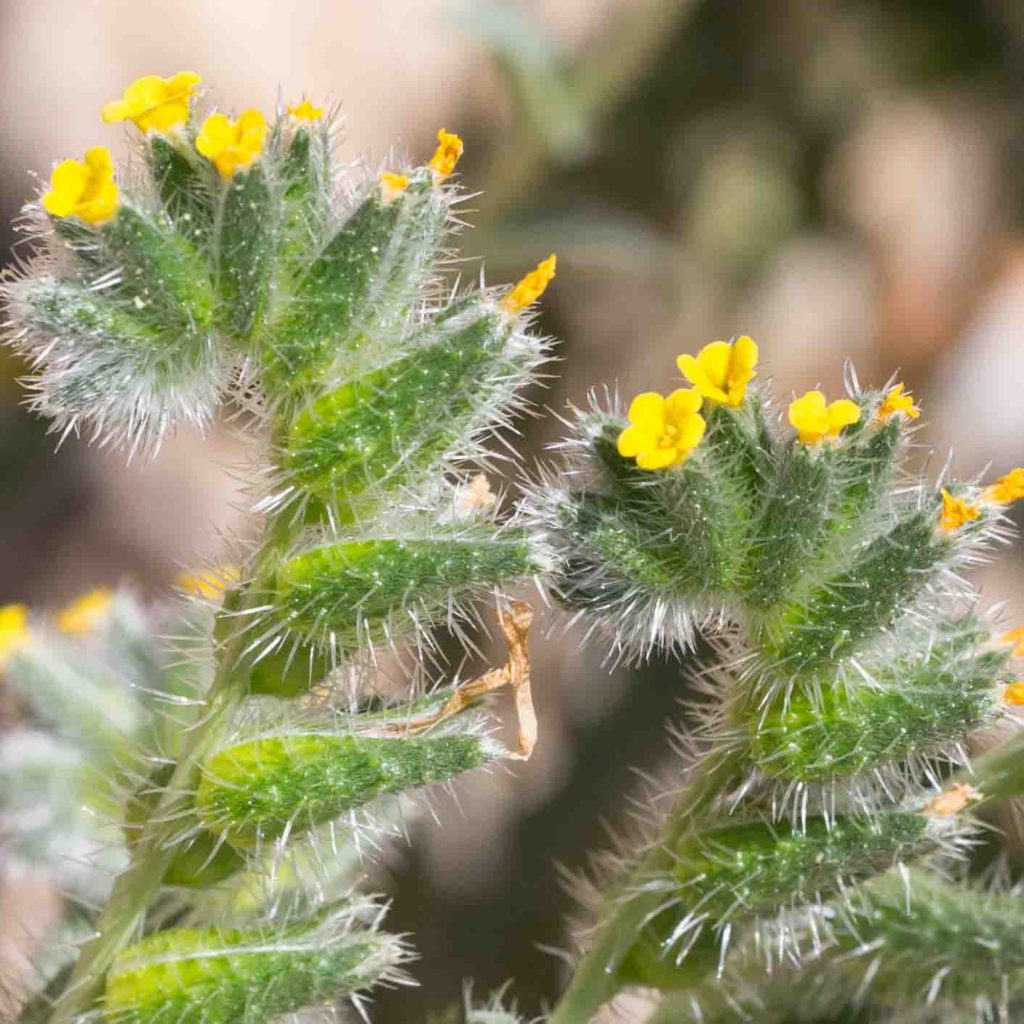Boraginaceae: Borage Family – Fiddleneck
Most members of the Borage family have their flowers arranged in coiled (scorpiod) cymes. They bloom from the base upwards, gradually unfurling like a scorpion’s tail or caterpillar, as new flowers emerge. Fiddlenecks, shown here, are a classic illustration of this, the name deriving from the shape of the top of a violin or fiddle. They should not be confused with Fiddleheads, which are immature fern fronds. Fiddlenecks fall into two broad categories, those with 2–4 calyx lobes, unequal in width and those with 5 calyx lobes of equal width. Careful examination is usually needed to identify the different species, they are difficult if not impossible to identify from a distance.
Douglas’ Fiddleneck – Amsinckia douglasiana
Blooms:
Mar–June
Plant Height:
20–120 cm
Flower Size:
Small-medium (in clusters)
Origin:
Native
Rare or Endangered?
Yes – 4.2
Habitat:
Unstable shaly soils in interior and southern parts of county
Notes:
One of a minority of fiddlenecks with 2–4 calyx lobes of unequal width. This has comparatively large, bright orange flowers, 14–22 mm long and 10–16 mm across, each lobe with 5 darker spots. The stem is slender and branched in the upper half. Forms impressive displays along the side of the Jolon/ Bradley road in Hames Valley.
Common Fiddleneck – Amsinckia intermedia
Blooms:
Apr–Aug
Plant Height:
20–120 cm
Flower Size:
Small (in clusters)
Origin:
Native
Habitat:
Grassland, disturbed areas
Notes:
As its name suggests, this is the most commonly found Fiddleneck, certainly in the Monterey Peninsula where it is often found in great profusion. Individual flowers are 7–11 mm long and 4–10 mm across, with a long, exserted tube. Usually, they have orange spots at the base of the lobes. There are 5 narrow calyx lobes, equal in width and fused only at their base. Leaves are wavy-edged and bristly. Except for the size of its flowers, this is similar to Small-flowered Fiddleneck (Amsinckia menziesii, see below), and Jepson suggests that they might be better regarded as a single species. Photo #2 by CJH.
Small-flowered Fiddleneck – Amsinckia menziesii
Blooms:
Mar–July
Plant Height:
20–120 cm
Flower Size:
Very small (in clusters)
Origin:
Native
Habitat:
Open/disturbed areas at woodland edges
Notes:
This is similar to Common Fiddleneck (Amsinckia intermedia, see above), but with smaller and paler flowers (4–7 mm long, 1–3 mm across), more or less exserted from the calyx tube. Stems have two kinds of hairs, some short and appressed, others longer and spreading. The finger nail is included for scale, it is exactly 1 cm across at its widest point.
Seaside Fiddleneck – Amsinckia spectabilis var. spectabilis
Blooms:
Mar–June
Plant Height:
10-60– cm
Flower Size:
Small-medium (in clusters)
Origin:
Native
Habitat:
Sandy places, mainly coastal
Notes:
Although immediately recognizable as a fiddleneck, this species has several distinct features. First, the stems are usually decumbent, and second the leaves are more or less succulent, with fine teeth, each ending with a bristly hair. Flowers are 7–15 mm long, 5–12 mm wide with 5 calyx lobes of equal width. Photo #2 by CJH.
Carrizo Fiddleneck – Amsinckia tessellata var. gloriosa
Blooms:
Mar–June
Plant Height:
20–120 cm
Flower Size:
Small-medium (in clusters)
Origin:
Native
Habitat:
Sandy or shaly soils, inland and south county
Notes:
Like Douglas’ Fiddleneck (Amsinckia douglasiana, see above), this has 2–4 calyx lobes of unequal width, and with a distinct notch at the tip. Its flowers are a little smaller (12–16 mm long and 10–16 mm across). A subtle difference is that the length of the style in this species is constant, while it varies in Douglas’ Fiddleneck. Occasionally found near eastern end of Carmel Valley Road. Can form expansive populations in the Carrizo Plains area.
Waxy Fiddleneck – Amsinckia vernicosa
Blooms:
Mar–May
Plant Height:
20–120 cm
Flower Size:
Small (in clusters)
Origin:
Native
Habitat:
Shaly slopes
Notes:
This uncommon fiddleneck has 2–4 calyx lobes of unequal width, just like Carrizo Fiddleneck (Amsinckia tesselata var. gloriosa, see above), which likes similar conditions. But this is easily distinguished by its smaller flowers (8–12 mm long and 2–6 mm across), its white-to-pinkish nearly-glabrous stem, and its glaucous leaves.
